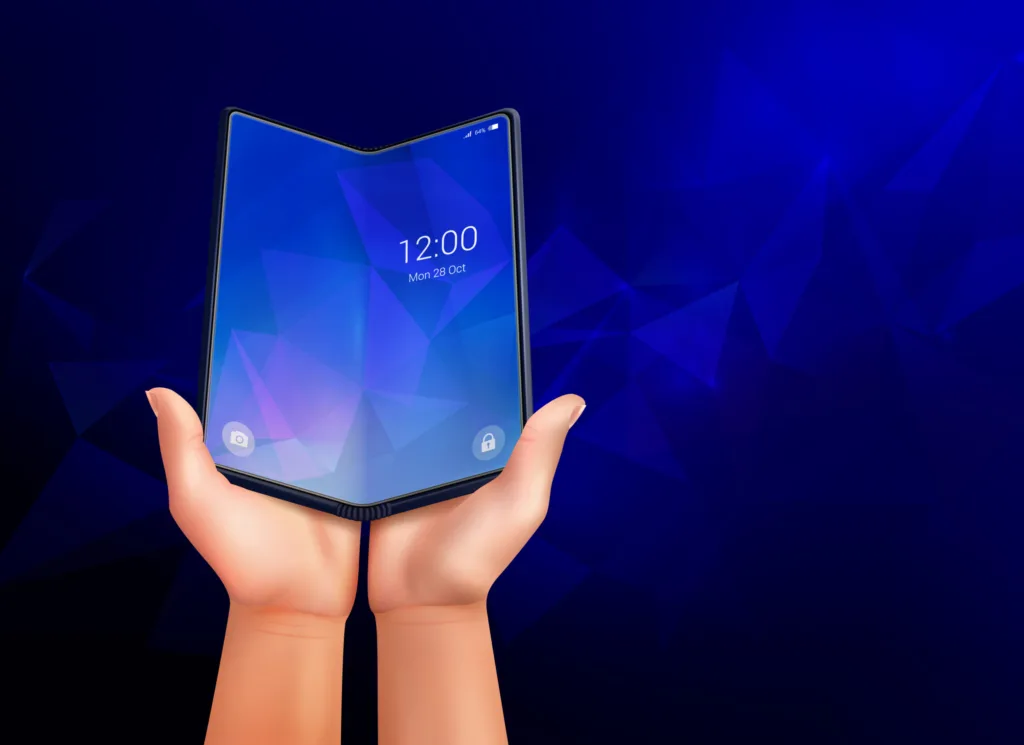When you purchase through links on our site, we may earn an affiliate commission. This doesn’t affect our editorial independence.
Did you know folding phones actually started way back in the 90s? The Motorola StarTAC kicked things off in 1996. But those old flip phones disappeared when everyone started buying iPhones and BlackBerrys with their fancy touchscreens. Now folding phones have returned. But they’re nothing like those old flippers. These new devices cost a fortune and pack some serious tech inside. Let’s look at the Pros and Cons of Foldable Phones.
What do you need to know about using a foldable smartphone? Should you swap your iPhone for a Microsoft Surface Duo 2 or your Samsung Galaxy S21 Ultra for a Galaxy Z Fold or the comparatively tiny Galaxy Z Flip? Here are the pros and cons of using foldable smartphones. You can also read a comparison between regular smartphones and foldable smartphones here.
The Pros of Foldable Smartphones
The biggest advantage? Size flexibility. Folding phones get small when you need them to be portable. They get big when you want a large screen. Some models basically transform from a normal phone to a tablet.
They definitely make an impression too. Pull one out at a meeting and watch everyone notice. These aren’t just phones – they’re status symbols that show you care about cutting-edge technology.
Most folding phones come loaded with other premium features. You’ll typically find bigger batteries, top-notch cameras, the fastest processors, and much better multitasking abilities than standard phones offer. Having all that screen space makes running two apps side by side actually practical instead of squinty and frustrating.
Since we are looking at the Pros and Cons of Foldable Phones, here are the cons.
The prices are absolutely brutal. While regular flagship phones already cost too much, folding models take expense to another level entirely. Prepare to spend at least $1500, sometimes much more.
Battery troubles plague most models despite their larger physical batteries. Those big screens drain power fast. Many users report needing mid-day charging – a step backward when regular phones often last all day.
Durability remains questionable. Early folding phones broke embarrassingly fast. Newer versions improved things dramatically but still don’t match regular phones for toughness. The hinges wear out gradually. Screens develop creases. Dust gets where it shouldn’t. Water resistance lags behind non-folding flagships.
And let’s talk size. When folded, most models end up thicker than regular phones. Some feel downright chunky in pockets. The larger models barely fit in some pockets at all.
Folding phones make sense for certain people. If you constantly switch between phone and tablet tasks, having one device instead of two feels liberating. Digital artists appreciate the larger canvas. Multitaskers love running apps side-by-side properly. This can actually be both a Pros and Cons of Foldable Phones.
But honestly? Most people should probably wait. The technology keeps improving fast while prices will eventually drop. Each new generation fixes problems and adds features. Meanwhile, regular smartphones continue doing their jobs perfectly well without the compromises folding phones demand. Wait and weigh the Pros and Cons of Foldable Phones
Think hard about how you actually use your phone day to day. The coolness factor wears off quickly. The practical benefits need to justify that massive price premium and the extra care these devices require.
